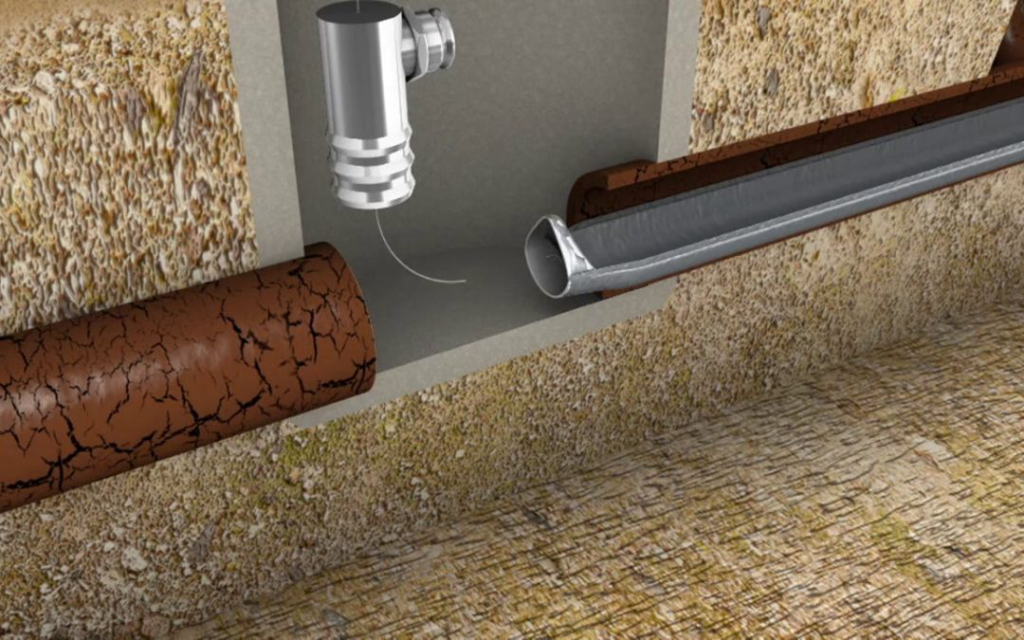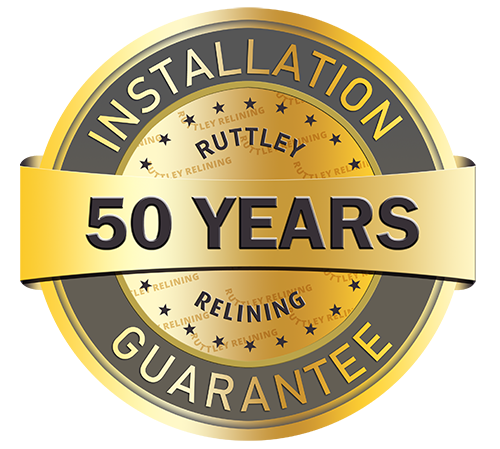
Are you having troubles with blocked drainage pipes? Unsure of whether you need new pipes, or simply need to reline your drainage pipes? We have explored your options below.
To ensure your relining or pipe renewal is top notch, you may want to check that the products are ISO9001 certified, as well as AWWA M28 or ASTM F1216 – 16 rated, depending on whether you are undertaking a replacement or relining project.
Pipe Relining
Pipe relining is fairly common for sections of drain and sewer pipes where the cost of access or removal becomes prohibitive.The pipe lining procedure is often used for both water and gas supply pipes. This might be in a domestic setting (your home) or for commercial buildings.
The process involves draining the original or problem supply pipes, drying them out and sandblasting them to ensure they are as clean as possible. A protective coating is then applied into the system and allowed to dry, offering increased protection for the pipes.
This provides a renewed protective coating to the pipes and extends their life. This is a great interim solution, and low cost compared to replacing the problem pipes. However, there will come a time when the pipes will eventually need to be replaced.
This option is also the most time effective – a quick fix compared with renewing the affected pipes.
Lining also makes sense for buildings where asbestos may be present, preventing pipe access and replacement. There may also be properties and pipe systems with problematic drain pipes underneath the building’s foundational concrete slabs, making access to the pipes nearly impossible, and thus preventing renewal/replacement.
Pipe Renewal
If relining has all these advantages, why renew the pipe at all? Nothing lasts forever, and pipes, like any other part of your house, experience wear and tear and eventually demand replacement – after all, there are only so many band aids that can get you by. All new pipes should last decades longer as they are newer, with improved technology.
New pipes will also see a significant drop in the overall maintenance costs incurred for the property over the life of the pipe as new pipes require less attention than old pipes with lining fitted.
There are two pipe types that you should remove immediately if found, no matter how old they are. Lead pipes have a life expectancy of 100 years, but they can leach lead into your drinking water, a serious health hazard.
Second, Polybutylene pipes, used from the 1970s through the 1990s, are extremely prone to breakage. Thus, if you find either of these pipe types, you cannot reline them to solve the problem – you must replace them for your own health and to avoid a future disaster.
Replace When You Renovate
A significant amount of your plumbing will be hidden and difficult to access, either under a concrete slab or in your walls. This means that the best time to replace and renew your pipes would be during a renovation. If you undertake these activities, ensure you consult with a plumber and understand whether this is necessary, particularly if your house if more than 60 years old.
Things to Consider
When replacing or relining your pipes, you need to give consideration to the soil type you will be working with. The soil type can affect the efficiency of pipe renewal and replacement solutions, impacting ease of access and how quick a pipe may break down (i.e. soil acidity, etc.).
Sandy soils are great for infiltration, but clay soils tend to become waterlogged. For example, traditional conveyancing methods may need to be considered as an additional solution in heavy clay soils.
Happy plumbing and piping!
Are you having troubles with blocked drainage pipes? Unsure of whether you need new pipes, or simply need to reline your drainage pipes? We have explored your options below.
To ensure your relining or pipe renewal is top notch, you may want to check that the products are ISO9001 certified, as well as AWWA M28 or ASTM F1216 – 16 rated, depending on whether you are undertaking a replacement or relining project.
Pipe Relining
Pipe relining is fairly common for sections of drain and sewer pipes where the cost of access or removal becomes prohibitive.The pipe lining procedure is often used for both water and gas supply pipes. This might be in a domestic setting (your home) or for commercial buildings.
The process involves draining the original or problem supply pipes, drying them out and sandblasting them to ensure they are as clean as possible. A protective coating is then applied into the system and allowed to dry, offering increased protection for the pipes.
This provides a renewed protective coating to the pipes and extends their life. This is a great interim solution, and low cost compared to replacing the problem pipes. However, there will come a time when the pipes will eventually need to be replaced.
This option is also the most time effective – a quick fix compared with renewing the affected pipes.
Lining also makes sense for buildings where asbestos may be present, preventing pipe access and replacement. There may also be properties and pipe systems with problematic drain pipes underneath the building’s foundational concrete slabs, making access to the pipes nearly impossible, and thus preventing renewal/replacement.
Pipe Renewal
If relining has all these advantages, why renew the pipe at all? Nothing lasts forever, and pipes, like any other part of your house, experience wear and tear and eventually demand replacement – after all, there are only so many band aids that can get you by. All new pipes should last decades longer as they are newer, with improved technology.
New pipes will also see a significant drop in the overall maintenance costs incurred for the property over the life of the pipe as new pipes require less attention than old pipes with lining fitted.
There are two pipe types that you should remove immediately if found, no matter how old they are. Lead pipes have a life expectancy of 100 years, but they can leach lead into your drinking water, a serious health hazard.
Second, Polybutylene pipes, used from the 1970s through the 1990s, are extremely prone to breakage. Thus, if you find either of these pipe types, you cannot reline them to solve the problem – you must replace them for your own health and to avoid a future disaster.
Replace When You Renovate
A significant amount of your plumbing will be hidden and difficult to access, either under a concrete slab or in your walls. This means that the best time to replace and renew your pipes would be during a renovation. If you undertake these activities, ensure you consult with a plumber and understand whether this is necessary, particularly if your house if more than 60 years old.
Things to Consider
When replacing or relining your pipes, you need to give consideration to the soil type you will be working with. The soil type can affect the efficiency of pipe renewal and replacement solutions, impacting ease of access and how quick a pipe may break down (i.e. soil acidity, etc.).
Sandy soils are great for infiltration, but clay soils tend to become waterlogged. For example, traditional conveyancing methods may need to be considered as an additional solution in heavy clay soils.
Happy plumbing and piping!

